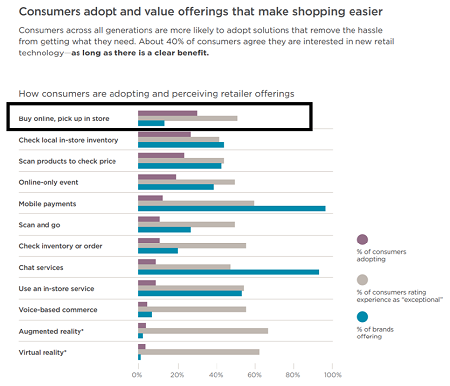Buy Online, Pick Up in Store (“BOPUS”)
by Jeff Winsper
There’s a rising tide of online competition for independent dealers, but there are a few choices retailers/dealers can make to try and get, keep, and grow their customer base. One of those techniques is called BOPUS – Buy Online and Pick Up in Store.
This approach isn’t truly a ‘pure play’ e-commerce method, because the buyer does make the commitment to go to a store to pick up the inventory. Let’s call it a hybrid model. BOPUS can be sponsored and executed at the OEM/Brand level, by providing the digital ‘air cover’ to promote its product and eventually drive traffic to each of their representative dealers (to fulfil the transactions). The inverse approach can happen too, in which the responsibility for the customer’s experience falls on the local dealer who has their own digital BOPUS web asset (branded at the store level) offering up key brands available to be ‘bought’ online.
BOPUS implementation is seemingly making traction for all age groups – especially the elusive digitally-oriented younger demographics. Of all the various digital engagement options available (such as check local store inventory, scan-and-go, and mobile payments to name a few), BOPUS is the most widely adopted according to an Alliance Data Analytics study called “The Great Divide – Connecting Brands to the Real Needs of Today’s Consumers.”

Of course, some organizations are not ready for actually collecting payments online and modifying the process to being more akin to ‘Reserve Online and Pick Up In Store.’ The experience would be similar to an e-commerce buying process, however they would put in a credit card number simply for symbolic commitment (the merchant wouldn’t charge the card until the goods are physically exchanged at the POS). Nevertheless, this approach still is more effective than not having any online purchasing option, and is more seamless to implement than pivoting to pure play e-commerce.
One of the challenges facing smaller independent retailers is not being able to understand how to process and display their on hand inventory online, in real-time, to avoid consumers’ frustration at assuming what they bought online actually was available in stock. Connecting your Dealer Management System (DMS) that manages the POS is one way to bridge the gap.
Lastly, independent dealers are not necessarily prepared (technologically speaking) to provide the internal IT resources required to complete the cycle. The OEM/Brands seemingly are not either, despite the consumer’s desire to utilize a more digital approach – which is a growth opportunity staring at them right in the face.

For hardware, OPE, Ag, and other dealers to get, keep, and grow their customer base investments are required to meet the needs of your growth requirements. Take a hard look and ask if you are truly an expert in retailing, in addition to IT development. If the answer is clearly ‘no,’ then outsource the function so you can focus on what you do best.
